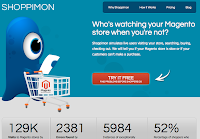It’s been four years ago that I joined Taboola. The office was old and tired, I was given a desk right next to a heavily used tennis table, and the whiteboard in my office fell off every time someone closed the door in the office next to mine. There were about 60 of us Taboolars in the Tel Aviv office, and we were just starting to see revenue come in from a new and innovative model of sponsored content...
Fast forward to today. I’m working out of the 32nd floor of a shiny new office building overlooking the stunning skyline of Ramat Gan. We still have a tennis table, but it has its own space now. We’ve built the open web’s largest discovery platform - we recommend content to over a billion people every month. Our revenue has grown fast, very fast, and there are about 800 of us in 15 offices across the world.
As I pause and look back at the journey I was fortunate to be part of in the last 4+ years, these are a few things I learned (or rather re-learned) as head of Marketing at Taboola:
The key to success is not the market, the technology, or even the people - it’s the organization’s ability to build functional teams. What makes one company succeed where others fail? Ideas are a dime a dozen; your competitors are probably hiring top talent just like you do; positioning, target market or business model can change. To me, functional teams are the secret sauce - team members that trust each other, that are not afraid to speak their mind, that are passionate about their work, and can work extremely well, under immense pressure, with one another. Companies that possess the culture and operational knowhow required to build and support functional teams will always be at an advantageous position in the market. As our CEO Adam says, your competitors can copy anything but culture.
Hire slow, fire fast. Somewhat related to my first point, hiring decisions are the most important decisions you make as a manager. Throughout my career, every single time I felt I had to move forward with hiring an individual despite a nagging feeling he or she was not “the one,” I eventually regretted it. Our hiring process at Taboola often takes a long time - at times it’s very long. We make sure candidates meet as many employees as possible. Even though we’re now hiring about a person a day, our COO Eldad still interviews most candidates himself - this shows the importance we place on making the right hiring decisions. Don’t get me wrong, we’re not perfect and we do make hiring mistakes - and I also learned the importance of terminating the relationship quickly when it’s not a good fit for us or the candidate....
Being nice pays big dividends. Working at a hyper-growth tech company is extremely rewarding, but it also means you’ll be spending most of your waking hours at a high pressure environment. Keeping your calm and being nice to your co-workers, partners, customers and competitors is incredibly valuable. Carrying heated arguments over endless email chains, shaming a peer in a meeting or bashing your competitor will never ever be wise. It’s easier to do business with nice people, it’s easier to work with and for nice people, and recognizing an achievement, as small as it may be, or thanking someone for a little bit of help, never costs anyone anything. So be nice.
Story first, facts after. No matter what field you’re in - from politics to performance marketing - a compelling, well told story always beats dry facts. At Taboola it’s all too easy to throw numbers around - CTR, CPC, CPM, RPM, CVR, etc. etc. (if we only had a cent for each acronym used in this industry…), yet in order to make people connect with our product and vision, you need to be a storyteller. We’re powering moments of discovery, helping people find things they like and never knew existed. Yes, numbers are important - if your technology sucks, if your CAC is too high, or your CVR or RPM is too low, even a good story won’t save you, but stories will always be a far more effective communication vehicle than facts.
That’s it. More insights from me on my 8-year anniversary at Taboola :)























